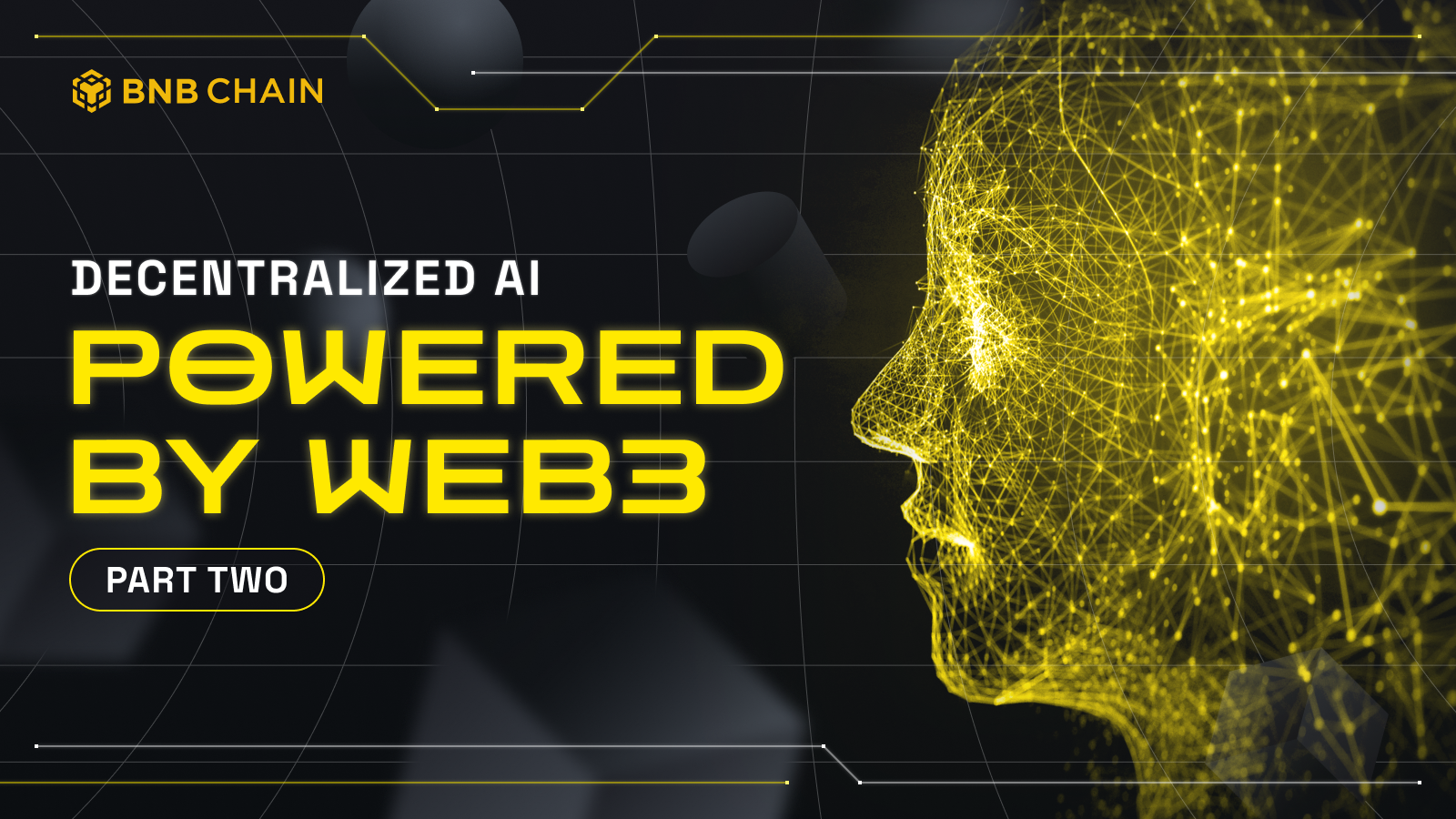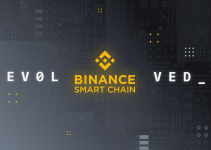Table of Contents

TL;DR:
- In Web3, decentralizing computational resources has the potential to create a more fair and equitable AI ecosystem by providing a computationally powerful, cost-efficient, and energy-saving infrastructure.
- The increasing complexity of AI algorithms poses challenges, but Web3 technologies, with their focus on distributed computing and open collaboration, provide a promising framework for fostering collaborative AI initiatives.
- Web3, with its emphasis on decentralization and tokenization, enables individuals and organizations to control their data and receive fair compensation for their contributions.
In Part One, we saw how data is key in AI and how Web3 is making a big difference in dealing with data problems like privacy and access. Now, in Part Two, the conversation shifts to the functional advancements Web3 offers to AI systems.
We will explore the critical areas of optimization of computation, frameworks for complex dataset processing, and the establishment of an incentivized ecosystem fostering equitable contributions to AI.
Now, let’s get into how Web3 is really changing the game for AI systems.
Web3 on AI Computation
Computational capabilities play a crucial role in the advancement of AI. The effectiveness of AI algorithms and models is often determined by the underlying hardware and software infrastructure that supports them. The computational capabilities of AI systems are typically evaluated based on several key characteristics:
- Processing power: Processing power mainly depends on the performance of the CPU, GPU and specialized AI accelerators, such as TPUs and FPGAs. Each of these components has its strengths and weaknesses in terms of performance, cost, and energy efficiency.
- Memory capacity: AI systems often require large amounts of memory to store data for training and inference tasks. Sufficient memory capacity is essential for handling large datasets, which are becoming increasingly common in AI applications. It also enables parallel processing of data across multiple cores or GPUs, further accelerating computation.
- Bandwidth: AI systems often require high bandwidth to transfer large amounts of data quickly, especially during training and inference phases.
- Energy Efficiency: AI systems are often compute-intensive and require efficient hardware to minimize energy consumption.
- Scalability: AI systems often need to be scalable to accommodate the growing demand for AI applications.
In Web2, the computation resources are largely held by centralized companies. These companies invest plenty of money into these resources, to not only speed up AI training, but also for building more sophisticated AI algorithms and models. Moreover, to keep maintaining their competitive advantage, they have to continually invest in hardware and even redesign the underlying algorithms to handle scaling issues.
Moreover, It is not uncommon that those resources are not fully utilized, leading to inefficient resource allocation and wastage. Plus, let’s not forget that it takes a tremendous amount of energy to keep the whole system running.
Lastly, centralized computing resources present a significant barrier to AI startups and researchers, primarily due to the high costs of hardware and the substantial expenses associated with resources and energy. However, Web3 has the potential to revolutionize this landscape, offering a more equitable and efficient AI ecosystem through the decentralization of computational resources. This shift could lead to a surge in innovation and a wider array of AI applications.
Particularly noteworthy is the potential of distributed computation blockchain technology. This approach harnesses a network of distributed resources, substantially enhancing the processing power available for AI tasks. It’s especially useful for demanding AI processes like training expansive language models or sophisticated deep learning algorithms.
The blockchain model proposes an economical framework that rewards participants for contributing computational resources. Resource providers can lease their computing power to AI developers and receive compensation in cryptocurrencies or other digital tokens. This arrangement fosters a self-sustaining ecosystem where AI developers gain access to necessary resources, and providers are fairly remunerated.
A crucial benefit of this model is the “pay-as-you-use” approach. It allows AI developers to utilize computational resources as needed, without the commitment to substantial infrastructure investments. This model is particularly cost-effective compared to traditional cloud services, especially for projects with variable workloads or unpredictable demands. In sum, the distributed computation blockchain offers a powerful, efficient, and economically viable platform for AI development, making advanced computing resources more accessible to a broader range of innovators.
Web3 for AI Algorithms
If data is AI’s fuel, one can think of algorithms as the powerhouse propelling its capabilities. Without an algorithm, data remains a collection of abstract 0s and 1s. Algorithms are the ones translating raw data into meaningful insights and intelligent actions. In essence, they are the “intelligence” in “artificial intelligence.”
If we trace back the history of AI, it is easy to find that it is marked by periodic breakthroughs in algorithm development, each driving a new wave of innovation and advancement. From the early days of symbolic AI to the rise of machine learning, support vector machines, and deep learning – each generation of algorithms has expanded AI’s capabilities and opened up new possibilities.
The complexity and sophistication of AI algorithms has increased significantly over time, making it increasingly challenging for individual researchers or organizations to make significant breakthroughs. This is partly due to the computational demands of modern AI algorithms, which often require specialized hardware and extensive training data.
Web3 technologies, with their emphasis on distributed computing, decentralized governance, and open collaboration, offer a suitable framework for facilitating collaborative AI initiatives. Web3 platforms can provide a secure and transparent environment for sharing data, models, and computational resources, enabling researchers and developers to collaborate effectively on AI projects.
Web3’s Incentivization of AI
While we’ve touched upon the monetization of AI with Web3 in previous discussions, we consider it imperative to dedicate a distinct section for a comprehensive demonstration. In essence, Web3 monetization for AI signifies a shift in the profit paradigm, moving from resource controllers earning to contributors earning.
In Web2, the primary revenue distribution is typically structured as follows:
- The data collector and transfer get profit from the control of data.
- The AI trainer gets profit from the control of data and algorithms.
- The AI production company gets profit from the control of the resource they have to bridge the AI model and market requirements.
And now, the questions arise:
- Do data producers profit from the creation of data?
- Do inventors of AI algorithms profit from their investment in research?
- Is everyone working on AI computational resources, algorithm tuning and optimizations, and minor innovations getting the rewards they deserve?
The answer is “probably not”, although there can be money paid for data collection, fees for patent transfers and licensing, rewards and salaries for engineers and researchers. Outside of this, it is hard to determine whether contributors are getting paid what they deserve.
Beside the profit made, there can be other questions, such as:
- How does the data collection company guarantee the data correctness?
- How does the data producer and owner know the data are not abused without their authorization?
- How does the AI company ensure that the data they get from the vendor are pre-processed as they expected?
- How does the resource consumer in the whole cycle make sure they didn’t overpay for what they got?
Answers to these questions often fall short within the Web2 paradigm. Web3 technologies, with their emphasis on decentralization, tokenization, transparency, and open collaboration, offer solid solutions to some of these challenges.
By enabling individuals and organizations to own and control their data, and by providing mechanisms for sharing AI models and computational resources, Web3 can foster a more inclusive and equitable AI ecosystem.
With Web3:
- The data producers get paid for their contributions to data production.
- The data collector and transferer gets paid for data collection and data transformation.
- The algorithm inventor gets paid from their contribution to the highly valued algorithm.
- The AI companies get paid via the contribution of their computational resources, training efforts and valuable data.
- The production companies profit from monetizing their production, and can actually reduce the abuse of their product by leveraging blockchain tech.
Arguably, there can be new kinds of markets, such as:
- Data markets: If all data is treated as an asset, the data that is of higher quality will be worth more.
- Data processor markets: In environments where various data processors specialize in different types of data, they generate revenue by providing preprocessed data to consumers, such as AI trainers. These trainers utilize this specialized data to ensure the performance and accuracy of their AI models.
- AI model markets: Since AI models are designed for diverse applications, a market for these models can emerge. Users can select and purchase models that best fit their specific needs, creating a demand-driven marketplace where the focus is on matching the right AI model to the right use case.
- Application markets: This is quite like the classic application market, where users select and pay for applications they wish to use. The distinction with Web3 lies in the implementation of on-chain access control. This feature allows application providers and users to regulate access and prevent misuse, offering a more secure and controlled environment for application deployment and usage.
With the help of Web3, and its incentivizing mechanism, it is more likely that individual players in the whole AI cycle would earn fairly from their contribution, or be punished appropriately for malicious behavior.
Conclusion
Let’s summarize everything visually:
Here are some of the specific benefits of using Web3 tech for AI training and modeling:
- Ownership and resource control
- Decentralized computational resources and incentivization
- Transparency and trust
- Enlarged data ecosystem with guaranteed integrity
- Innovation friendly
In the next blog, we will see how the BNB Chain ecosystem enables the integration of AI technologies into its platform.


